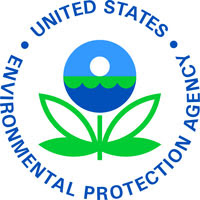My Father's boreal forests
Almost one-third of the world's forest area are the massive sub-arctic boreal forests of Canada, Scandinavia and Russia. The Lungs of our Father's Planet
The sub-arctic forests are so massive that they absorb huge amounts of carbon, and provide an irreplaceable source of oxygen. But with the warming climate, the number of days with extremely cold temperatures has decreased, allowing better survival for tree-damaging insects such as the spruce-bark beetle.But to some, the forest is simply in the way...
You can't get at the tar sands with all those life-sustaining trees in the way. The first step is to cut them down.This used to be a rich ecosystem...
Here is an aerial shot of the results.And here's what we're after...
With the trees gone, men can dig up the tarry substance under the soil, the results of eons of decay of plant matter -- carbon stored beneath he surface. But it takes a lot of energy to turn it into oil, resulting in much greater emissions of CO2 than conventional oil.To get it, we're clearing a massive area of God's boreal forest...
The area to be cleared is larger than the states of North Carolina or New York.And when we're done, here what our Father's forest looks like...
Not a living thing remains on the blackened landscape.Here's my Father's pristine northern river
The Athabasca River runs right through the tar sands region, and its water is diverted to process the mined tar sands so they can be shipped by pipeline.Toxic water is stored in tailing ponds along the Athabasca
It takes centuries for the heavy metals in these tailing ponds to settle to the bottom.Here's what the Athabsca's pristine waters look like afterward
The tailing ponds contain much, but not all the contaminants from processing bitumen for shipping through pipelines.Here's what those toxins do to our Father's creatures in the river
Most pictures of tumorous and deformed aquatic life in the Athabasca are too nauseating for polite company. Here's the route of the proposed pipeline bringing all that bitumen to the Gulf
A small pipeline already runs to the Midwest. The new one will enable production and emissions to triple, and will take it to Houston, where the oil can be shipped abroad.Here are some who care about our Father's world, being arrested
So far, more than 250 people who care about stewardship of the creation have been arrested at the White House this week. (Note: The final tally was 1,252 arrested.) They are demanding that our government protect the creation and withhold permits for the pipeline.Here is a congressman from our Father's state of Texas
Rep. Joe Barton has rejected the warnings issued by the National Academy of Science about severe global consequences from human-caused climate change. The rest of the Texas delegation regularly votes with him against measures to protect God's creation.Here is a Texas longhorn, emaciated from the crippling drought
So far this year, the drought, now predicted as a regular part of the new Texas climate, has cause $5.8 billion in agricultural losses, complete with the destruction of entire herds of cattle, and a USDA disaster classification in 215 Texas counties.Some impacts are felt far from home
The increased heat and changed weather patterns has devastated the Horn of Africa. We have watched in horror as failed rains have led to mass starvation in Somalia. Climate models predict further drying and crop failures in the increasingly hot world of the next several decades.Here's the man whom God can use to stop this
For the tar sands pipeline to be built, President Obama alone has to sign the permit. He knows the scientific facts. But he also knows the political facts: Oil lobbies are already advertising heavily, equating the pipeline with prosperity and energy security. But there is no prosperity and security in a world ravaged by reckless disruption of the systems our Father created to sustain His creatures. Only short-term profits for a few wealthy and powerful people.But this place belongs to our Father, not to them or anyone else. And we belong to Him as well. That's why we will be at the White House to ask the president to do the right thing. Maybe you will join us? Click here to find out how!
See you in Washington!
J. Elwood
Follow @John_Elwood










































